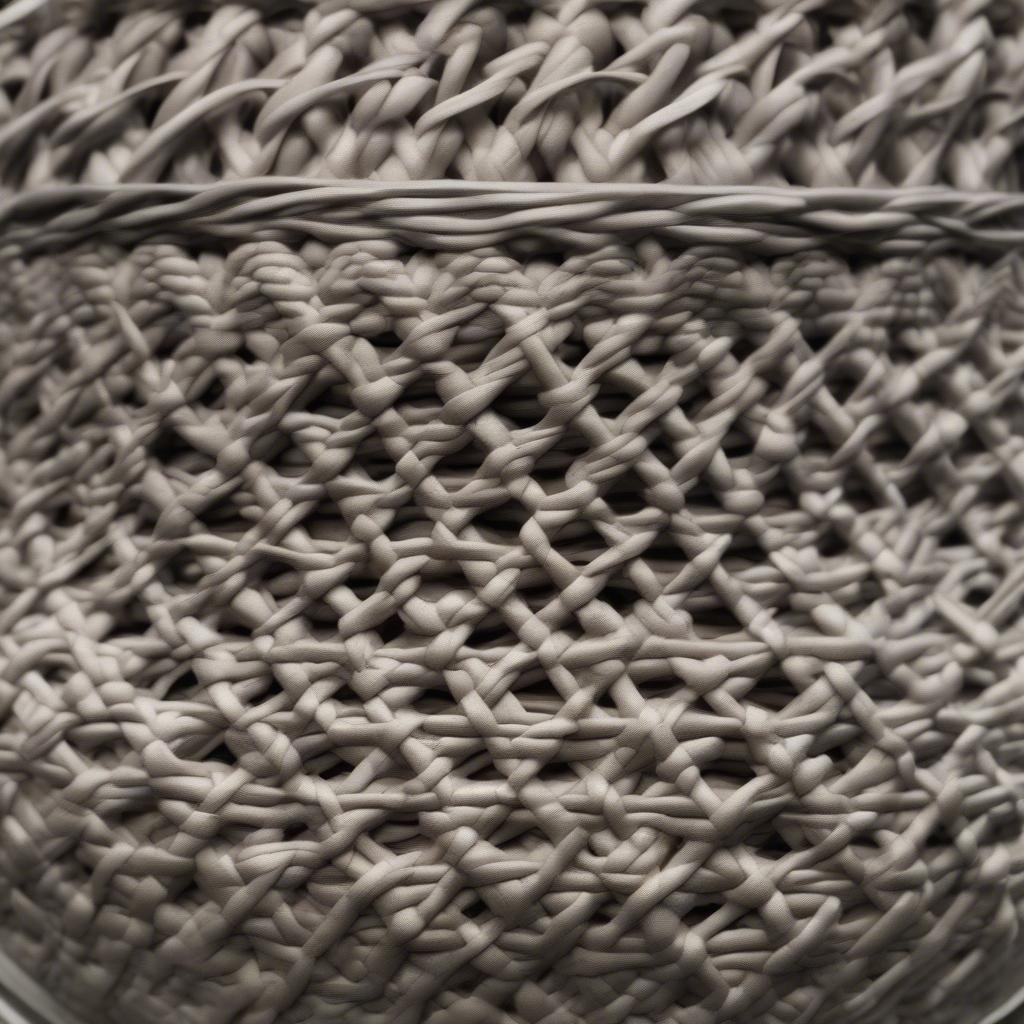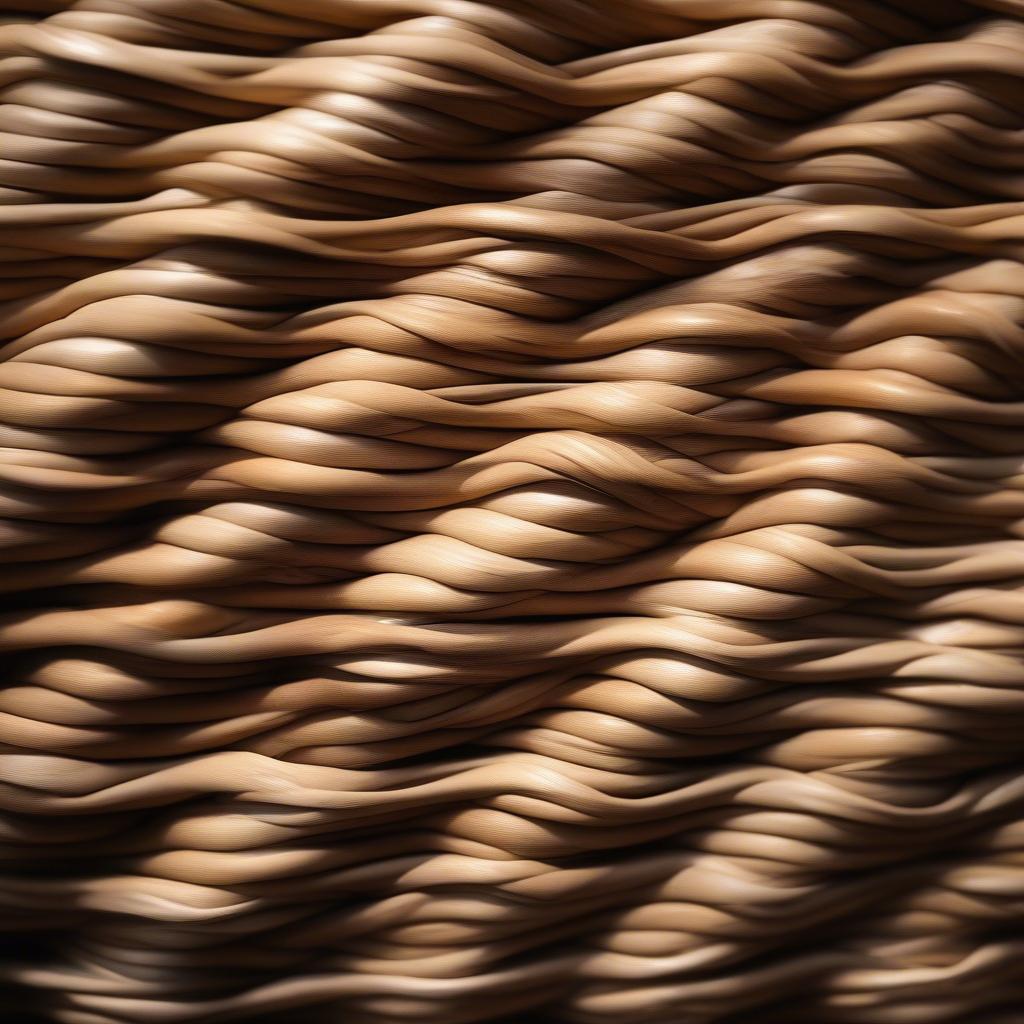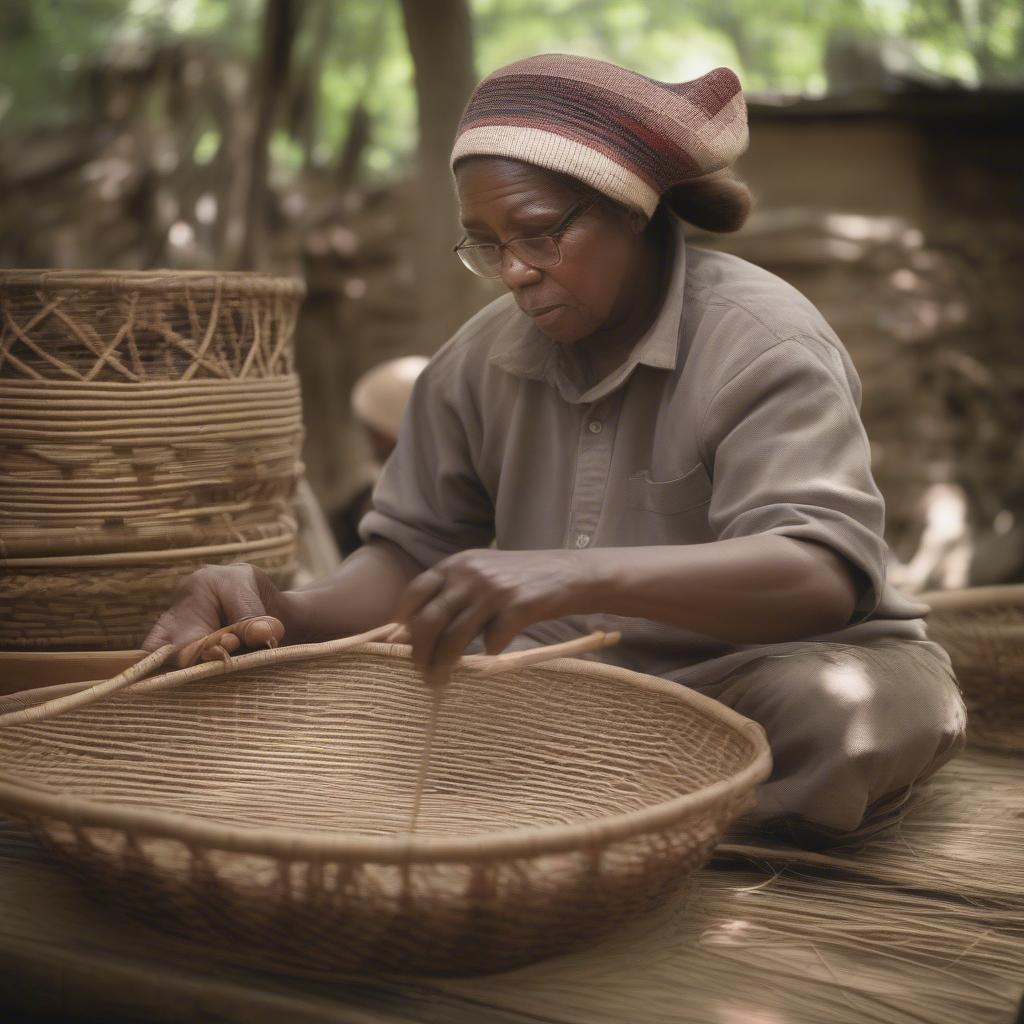Basket Weaving
Why Is Basket Weaving Strong?
Basket weaving is strong due to the inherent properties of the materials used and the structural integrity created by the weaving process. The interlocking fibers distribute weight and stress, resulting in a surprisingly durable and resilient final product. But there’s more to it than just intertwined strands. Let’s delve deeper into the fascinating world of basket weaving and explore the reasons behind its strength.  Basket Weaving Strength: Interlocking Fibers
Basket Weaving Strength: Interlocking Fibers
The Science Behind a Strong Basket Weave
The strength of a woven basket hinges on several key factors, from the type of material used to the specific weaving technique employed. Understanding these elements helps us appreciate the ingenuity and resilience of this ancient craft.
-
Material Selection: Natural materials like wicker and rattan are inherently strong and flexible. Wicker, often referring to a style of weaving rather than a specific material, can encompass willow, reed, and other pliable plant fibers. Rattan, a climbing palm, offers exceptional tensile strength and durability. These materials can withstand significant weight and pressure without breaking, making them ideal for basket construction.
-
Interlocking Fibers: The weaving process itself is crucial to a basket’s strength. The over-under-over pattern, common to many basket weaving techniques, creates a network of interconnected fibers. This interlocking structure distributes weight evenly across the entire basket, preventing stress from concentrating in one area. Think of it like a network of tiny bridges, each supporting the others.
-
Tightness of the Weave: A tightly woven basket is undoubtedly stronger than a loosely woven one. The closer the fibers are woven together, the less likely they are to shift or separate under pressure. This tight weave also contributes to the basket’s ability to hold its shape and resist deformation.
 Tightly Woven Rattan Basket Durability
Tightly Woven Rattan Basket Durability
Why is basket weaving so strong compared to simply bundling the materials?
Simply bundling materials together, while offering some strength, lacks the structural integrity of weaving. A bundle relies solely on the individual strength of each fiber and the friction between them. Weaving, on the other hand, creates a synergistic effect, where the intertwined fibers reinforce each other, distributing stress and creating a much stronger overall structure.
How Different Weaving Patterns Affect Strength
While the basic over-under weave is common and effective, various other weaving patterns can further enhance a basket’s strength and aesthetic appeal. Twills, herringbone, and wicker weaves, for example, create unique textures and structural variations that influence the basket’s overall strength and flexibility. basket weave icing technique offers a unique perspective on the strength and versatility of this technique, even in culinary arts.
The Role of Tradition and Expertise in Basket Weaving Strength
Traditional basket weaving techniques, passed down through generations, incorporate intricate details that contribute to the basket’s strength and longevity. Experienced basket weavers understand the nuances of material selection, weaving tension, and pattern choice to create durable and functional pieces.
“A well-crafted basket is not just a container; it’s a testament to the strength and resilience of nature and the skill of the weaver.” – Anika Sharma, Master Basket Weaver.
 Expert Basket Weaver Demonstrating Technique
Expert Basket Weaver Demonstrating Technique
Conclusion
The strength of basket weaving lies in the symbiotic relationship between material properties and weaving techniques. The interlocking fibers, combined with the inherent strength of materials like wicker and rattan, create a surprisingly robust structure. From the tightness of the weave to the specific pattern employed, every aspect contributes to the overall strength and resilience of a woven basket. So, the next time you admire a beautifully crafted basket, remember the intricate science and artistry that makes it so strong.
FAQ
- What makes basket weaving strong? The interlocking fibers distribute weight and stress, resulting in a surprisingly durable product.
- What materials are commonly used in strong basket weaving? Wicker, rattan, and other pliable plant fibers are commonly used.
- How does the weaving pattern affect the basket’s strength? Different weaving patterns create unique structural variations that influence the overall strength and flexibility.
- Why is weaving stronger than bundling? Weaving creates a synergistic effect where the intertwined fibers reinforce each other.
- What is the role of experience in creating strong baskets? Experienced basket weavers understand the nuances of material selection and weaving techniques to create durable pieces.
- What are some examples of strong basket weaving patterns? Twills, herringbone, and wicker weaves are examples of strong patterns.
- How can I learn more about basket weaving techniques? You can find more resources and tutorials online or by joining a local basket weaving class.
Have other questions? Please contact our Hotline at +84 388 951 999, or visit us in Hanoi, Vietnam or at Tech Avenue, Suite 12, San Francisco, CA 94105, USA. We have a 24/7 customer support team ready to assist you.
